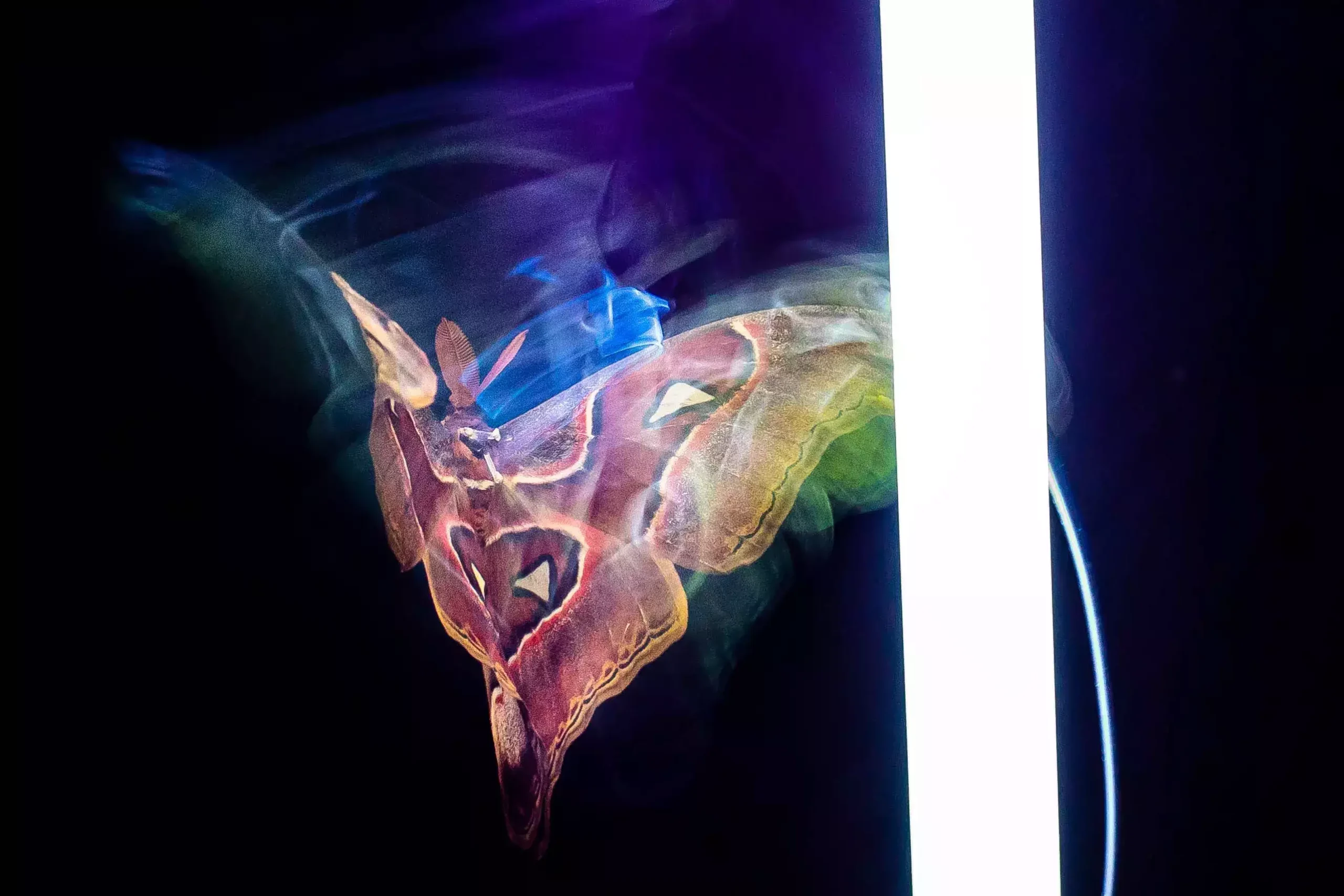In 1884, entomologist Mary Esther Murtfeldt made a fascinating observation: butterflies, typically active during the day, were inexplicably drawn to the lamps in her home at night. This peculiar behavior sparked centuries of curiosity surrounding why insects are attracted to various sources of light, ranging from flames to porch lamps.
Sam Fabian, a postdoctoral research associate at Imperial College London, took on the challenge of unraveling the mystery behind this phenomenon. Alongside Yash Sondhi and a team of biologists, Fabian conducted experiments using high-speed video cameras to observe the nighttime movements of flying insects like butterflies, moths, and dragonflies.
Their research uncovered a common pattern among multiple species: insects often turned away from the light source, causing them to fly erratically in circles or collide with objects, particularly when the light was positioned below or horizontally to their flight path. It seemed as though the insects were using the light to orient themselves in relation to the sky, a behavior known as dorsal light response.
While similar behavior is observed in fish navigating using light cues, this was the first time such behavior had been documented in nocturnal insects around artificial light sources.
Despite this breakthrough, the fundamental question of why insects are attracted to light remains unanswered. Various theories exist, including the idea of celestial navigation using the moon’s position, but the precise mechanism eludes researchers. Additionally, scientists are concerned about the adverse effects of light pollution on insect behavior and ecosystems.
Understanding the allure of light to insects could have significant practical implications, from devising strategies to reduce unintended insect fatalities to mitigating the ecological impact of light pollution. Moreover, insights gained from studying insect flight behavior could contribute to future advancements in technology, such as the development of flying vehicles.
In the interim, a simple yet effective solution to mitigate insect attraction to outdoor lights is to direct them downward, thereby minimizing the number of insects drawn to the light source.















































